ASC Polyclonal Antibody
- Catalog No.:YT0365
- Applications:WB;IHC;IF;ELISA
- Reactivity:Human;Mouse;Rat
- Target:
- ASC
- Fields:
- >>Necroptosis;>>NOD-like receptor signaling pathway;>>Cytosolic DNA-sensing pathway;>>C-type lectin receptor signaling pathway;>>Pathogenic Escherichia coli infection;>>Shigellosis;>>Salmonella infection;>>Pertussis;>>Legionellosis;>>Yersinia infection;>>Influenza A;>>Lipid and atherosclerosis
- Gene Name:
- PYCARD
- Protein Name:
- Apoptosis-associated speck-like protein containing a CARD
- Human Gene Id:
- 29108
- Human Swiss Prot No:
- Q9ULZ3
- Mouse Gene Id:
- 66824
- Mouse Swiss Prot No:
- Q9EPB4
- Immunogen:
- The antiserum was produced against synthesized peptide derived from human ASC. AA range:10-59
- Specificity:
- ASC Polyclonal Antibody detects endogenous levels of ASC protein.
- Formulation:
- Liquid in PBS containing 50% glycerol, 0.5% BSA and 0.02% sodium azide.
- Source:
- Polyclonal, Rabbit,IgG
- Dilution:
- WB 1:500 - 1:2000. IHC 1:100 - 1:300. IF 1:200 - 1:1000. ELISA: 1:40000. Not yet tested in other applications.
- Purification:
- The antibody was affinity-purified from rabbit antiserum by affinity-chromatography using epitope-specific immunogen.
- Concentration:
- 1 mg/ml
- Storage Stability:
- -15°C to -25°C/1 year(Do not lower than -25°C)
- Other Name:
- PYCARD;ASC;CARD5;TMS1;Apoptosis-associated speck-like protein containing a CARD;hASC;Caspase recruitment domain-containing protein 5;PYD and CARD domain-containing protein;Target of methylation-induced silencing 1
- Observed Band(KD):
- 21kD
- Background:
- This gene encodes an adaptor protein that is composed of two protein-protein interaction domains: a N-terminal PYRIN-PAAD-DAPIN domain (PYD) and a C-terminal caspase-recruitment domain (CARD). The PYD and CARD domains are members of the six-helix bundle death domain-fold superfamily that mediates assembly of large signaling complexes in the inflammatory and apoptotic signaling pathways via the activation of caspase. In normal cells, this protein is localized to the cytoplasm; however, in cells undergoing apoptosis, it forms ball-like aggregates near the nuclear periphery. Two transcript variants encoding different isoforms have been found for this gene. [provided by RefSeq, Jul 2008],
- Function:
- domain:Interacts with CIAS1/PYPAF1 and PYDC1 via the DAPIN domain.,function:Promotes caspase-mediated apoptosis. This proapoptotic activity is mediated predominantly through the activation of caspase 9. May be a component of the inflammasome, a protein complex which also includes NALP2, CARD8 and CASP1 and whose function would be the activation of proinflammatory caspases.,miscellaneous:In breast tumorigenesis, methylation-mediated silencing may affect genes and proteins that act as positive mediators of cell death.,PTM:Phosphorylated.,similarity:Contains 1 CARD domain.,similarity:Contains 1 DAPIN domain.,subcellular location:Upstream of caspase activation, a redistribution from the cytoplasm to the aggregates occurs. These appear as hollow, perinuclear spherical, ball-like structures.,subunit:Forms complexes with other DAPIN domain-containing proteins. Interacts with CIAS1/PYPAF1 and PY
- Subcellular Location:
- Cytoplasm . Inflammasome . Endoplasmic reticulum . Mitochondrion . Nucleus . Upstream of caspase activation, a redistribution from the cytoplasm to the aggregates occurs. These appear as hollow, perinuclear spherical, ball-like structures (PubMed:11103777, PubMed:12191486, PubMed:15030775). Upon NLRP3 inflammasome activation redistributes to the perinuclear space localizing to endoplasmic reticulum and mitochondria (PubMed:12191486, PubMed:15030775). Localized primarily to the nucleus in resting monocytes/macrophages and rapidly redistributed to the cytoplasm upon pathogen infection (PubMed:19234215). Localized to large cytoplasmic aggregate appearing as a speck containing AIM2, PYCARD, CASP8 and bacterial DNA after infection with Francisella tularensis (By similarity). .; Golgi apparatus
- Expression:
- Widely expressed at low levels. Detected in peripheral blood leukocytes, lung, small intestine, spleen, thymus, colon and at lower levels in placenta, liver and kidney. Very low expression in skeletal muscle, heart and brain. Expressed in lung epithelial cells (at protein level) (PubMed:23229815). Detected in the leukemia cell lines HL-60 and U-937, but not in Jurkat T-cell lymphoma and Daudi Burkitt's lymphoma. Detected in the melanoma cell line WM35, but not in WM793. Not detected in HeLa cervical carcinoma cells and MOLT-4 lymphocytic leukemia cells.
Noise exposure and its relationship with postinfarction cardiac remodeling: implications for NLRP3 inflammasome activation IHC Rat Stellate ganglia , heart tissues/
HDAC11 promotes both NLRP3/caspase-1/GSDMD and caspase-3/GSDME pathways causing pyroptosis via ERG in vascular endothelial cells Cell Death Discov. 2022 Mar;8(1):1-11. WB Mouse,Human 1:1000 thoracic aorta
Esculetin inhibits the pyroptosis of microvascular endothelial cells through NF-κB /NLRP3 signaling pathway Arch Biochem Biophys. 2022 May;720:109173. WB Rat
Effects of Hypoxic Environment on Periodontal Tissue through the ROS/TXNIP/NLRP3 Inflammasome Pathway Biomed Res Int. 2022;2022:7690960. WB,IHC Rat 1 : 1000,1 : 250 Periodontal
Attenuation of Oxidative Stress-Induced Cell Apoptosis and Pyroptosis in RSC96 Cells by Salvianolic Acid B Chin J Integr Med. 2022 Jan;:1-6. WB Rat 1:800
Decreased expression of Rev-Erbα in the epileptic foci of temporal lobe epilepsy and activation of Rev-Erbα have anti-inflammatory and neuroprotective effects in the pilocarpine model. Journal of Neuroinflammation J Neuroinflamm. 2020 Dec;17(1):1-15 WB Human 1:1000 temporal neocortex
NLRP3 inflammasome and endoplasmic reticulum stress in the epileptogenic zone in temporal lobe epilepsy: molecular insights into their interdependence. NEUROPATHOLOGY AND APPLIED NEUROBIOLOGY Neuropath Appl Neuro. 2020 Dec;46(7):770-785 WB,IF,IHC Mouse,Human 1:1000,1:200,1:1000 Temporal neocortices, bilateral hippocampi
Berberine Protects Against NLRP3 Inflammasome via Ameliorating Autophagic Impairment in MPTP-Induced Parkinson’s Disease Model. Frontiers in Pharmacology Front Pharmacol. 2021 Jan;0:2509 IF,IHC,WB Mouse 1:200,1:1000 Brain BV2 cell
TRPV4 Regulates Soman-Induced Status Epilepticus and Secondary Brain Injury via NMDA Receptor and NLRP3 Inflammasome. Neuroscience Bulletin Neurosci Bull. 2021 Jul;37(7):905-920 WB Rat 1:500 Hippocampal
Micro RNAs 26b, 20a inversely correlate with GSK-3 β/NF-κB/NLRP-3 pathway to highlight the additive promising effects of atorvastatin and quercetin in experimental induced arthritis. INTERNATIONAL IMMUNOPHARMACOLOGY Int Immunopharmacol. 2021 Oct;99:108042 WB Rat 1:500 Synovial tissue
Milk Fat Globule Membrane Inhibits NLRP3 Inflammasome Activation and Enhances Intestinal Barrier Function in a Rat Model of Short Bowel. JOURNAL OF PARENTERAL AND ENTERAL NUTRITION Jpen-Parenter Enter. 2019 Jul;43(5):677-685 WB Rat 1:1000 ileum
Geniposide inhibits NLRP3 inflammasome activation via autophagy in BV-2 microglial cells exposed to oxygen–glucose deprivation/reoxygenation. INTERNATIONAL IMMUNOPHARMACOLOGY Int Immunopharmacol. 2020 Jul;84:106547 WB Mouse 1:500 BV-2 microglial cells
Sestrin 2 protects against LPS-induced acute lung injury by inducing mitophagy in alveolar macrophages. LIFE SCIENCES Life Sci. 2021 Feb;267:118941 IF,WB Mouse 1:50 Lung J774.A1 cell
NPY Receptor 2 Mediates NPY Antidepressant Effect in the mPFC of LPS Rat by Suppressing NLRP3 Signaling Pathway. MEDIATORS OF INFLAMMATION Mediat Inflamm. 2019;2019:7898095 WB Rat 1 : 500 Brains
A selective NLRP3 inflammasome inhibitor attenuates behavioral deficits and neuroinflammation in a mouse model of Parkinson's disease. JOURNAL OF NEUROIMMUNOLOGY J Neuroimmunol. 2021 May;354:577543 WB Mouse 1:1000 Striatum, midbrain, cerebral cortex,hippocampus
MCC950 Inhibits NLRP3 Inflammasome and Alleviates Axonal Injures in Early Stages of Diffuse Axonal Injury in Rats. NEUROCHEMICAL RESEARCH Neurochem Res. 2020 Sep;45(9):2020-2031 WB Rat 1:1000 Cortex
Reactive oxygen species induced by uric acid promote NRK‑52E cell apoptosis through the NEK7‑NLRP3 signaling pathway. Molecular Medicine Reports Mol Med Rep. 2021 Oct;24(4):1-10 WB Rat 1:1000 NRK-52E cell
Metadherin silencing results in the inhibition of pyroptosis in lipopolysaccharide/adenosine triphosphate − stimulated renal tubular epithelial cells. TISSUE & CELL Tissue Cell. 2022 Apr;75:101722 WB Rat 1:1000 NRK-52E cell
Paeonia lactiflora Pall. regulates the NF‐κB‐NLRP3 inflammasome pathway to alleviate cholestasis in rats. JOURNAL OF PHARMACY AND PHARMACOLOGY J Pharm Pharmacol. 2018 Nov;70(12):1675-1687 WB Rat liver tissue
Ma, Xiao, et al. "Paeonia lactiflora Pall. regulates the NF‐κB‐NLRP 3 inflammasome pathway to alleviate cholestasis in rats." Journal of Pharmacy and Pharmacology 70.12 (2018): 1675-1687.
Wu, Dong-Dong, et al. "Inhibition of alveolar macrophage pyroptosis reduces lipopolysaccharide-induced acute lung injury in mice." Chinese medical journal 128.19 (2015): 2638.
Zhang, Dongping, et al. "Gasdermin D serves as a key executioner of pyroptosis in experimental cerebral ischemia and reperfusion model both in vivo and in vitro." Journal of neuroscience research (2019).
Yu, Zhicai, et al. "Milk Fat Globule Membrane Enhances Colonic–Mucus‐Barrier Function in a Rat Model of Short‐Bowel Syndrome." Journal of Parenteral and Enteral Nutrition (2020).
Zhang, Xingyan, et al. "Taxifolin alleviates FCA-induced arthritis via regulating the Th1/Th2 balance, and down-regulates NLRP3 inflammasome axis activation in Jurkat T cells." (2021).
Functional characterization of a potent anti-tumor polysaccharide in a mouse model of gastric cancer. LIFE SCIENCES 2019 Jan 03 WB Mouse 1:500 MFC cell
Berberine Protects Against NLRP3 Inflammasome via Ameliorating Autophagic Impairment in MPTP-Induced Parkinson’s Disease Model. Frontiers in Pharmacology Front Pharmacol. 2021 Jan;0:2509 IF,IHC,WB Mouse 1:200,1:1000 Brain BV2 cell
Berberine Protects Against NLRP3 Inflammasome via Ameliorating Autophagic Impairment in MPTP-Induced Parkinson’s Disease Model. Frontiers in Pharmacology Front Pharmacol. 2021 Jan;0:2509 IF,IHC,WB Mouse 1:200,1:1000 Brain BV2 cell
Gynostemma pentaphyllum polysaccharides ameliorate non-alcoholic steatohepatitis in mice associated with gut microbiota and the TLR2/NLRP3 pathway Frontiers in Endocrinology Rui-Rui Wang IHC Mouse
NLRP3 downregulation enhances engraftment and functionality of adipose-derived stem cells to alleviate erectile dysfunction in diabetic rats Frontiers in Endocrinology Anyang Wei WB Rat
ASC specks exacerbate α‑synuclein pathology via amplifying NLRP3 inflammasome activities Journal of Neuroinflammation Jiali Pu WB,IF Mouse brain tissues BV2 cell
Puerarin protects against sepsis-associated encephalopathy by inhibiting NLRP3/Caspase-1/GSDMD pyroptosis pathway and reducing blood-brain barrier damage EUROPEAN JOURNAL OF PHARMACOLOGY Min Zhao WB Mouse,Rat brain tissues Murine hippocampal neurons (HT22)
Coelonin protects against PM2.5-induced macrophage damage via suppressing TLR4/NF-κB/COX-2 signaling pathway and NLRP3 inflammasome activation in vitro ENVIRONMENTAL TOXICOLOGY Zhi-Shan Ding WB Mouse RAW264.7 cell,J774A.1 cell
Apple polyphenol extract alleviates DSS-induced ulcerative colitis and linked behavioral disorders via regulating the gut-brain axis. Xinli Li WB Mouse 1:1000 colon tissue
Hypoxic preconditioned mesenchymal stem cells ameliorate rat brain injury after cardiopulmonary resuscitation by suppressing neuronal pyroptosis. Feng Chen WB Rat cortical tissue
Saponins from Aesculus wilsonii seeds exert anti-inflammatory activity through the suppression of NF-κB and NLRP3 pathway. Tao Wang WB Mouse peritoneal macrophages (PMs)
Role and mechanism of MiR-542-3p in regulating TLR4 in nonylphenol-induced neuronal cell pyroptosis. PHYTOMEDICINE Jie Xu WB,IF Rat,Mouse 1:800,1 : 500 substantia nigra tissues BV2 cell
Chlorogenic acid protects against myocardial ischemia–reperfusion injury in mice by inhibiting Lnc Neat1/NLRP3 inflammasome-mediated pyroptosis. Scientific Reports Deqin Lu IHC Mouse cardiomyocytes
- June 19-2018
- WESTERN IMMUNOBLOTTING PROTOCOL
- June 19-2018
- IMMUNOHISTOCHEMISTRY-PARAFFIN PROTOCOL
- June 19-2018
- IMMUNOFLUORESCENCE PROTOCOL
- September 08-2020
- FLOW-CYTOMEYRT-PROTOCOL
- May 20-2022
- Cell-Based ELISA│解您多样本WB检测之困扰
- July 13-2018
- CELL-BASED-ELISA-PROTOCOL-FOR-ACETYL-PROTEIN
- July 13-2018
- CELL-BASED-ELISA-PROTOCOL-FOR-PHOSPHO-PROTEIN
- July 13-2018
- Antibody-FAQs
- Products Images

- Wu, Dong-Dong, et al. "Inhibition of alveolar macrophage pyroptosis reduces lipopolysaccharide-induced acute lung injury in mice." Chinese medical journal 128.19 (2015): 2638.

- Western blot analysis of lysates from 1) K562 , 2) Hela , 3) 3T3 cells, (Green) primary antibody was diluted at 1:1000, 4°over night, secondary antibody(cat:RS23920)was diluted at 1:10000, 37° 1hour. (Red) Tubulin β Monoclonal Antibody(5G3) (cat:YM3030) antibody was diluted at 1:5000 as loading control, 4° over night,secondary antibody(cat:RS23710)was diluted at 1:10000, 37° 1hour.
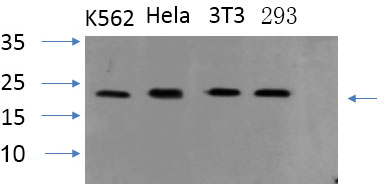
- Western Blot analysis of various cells using primary antibody diluted at 1:1000(4°C overnight). Secondary antibody:Goat Anti-rabbit IgG IRDye 800( diluted at 1:5000, 25°C, 1 hour). Cell lysate was extracted by Minute™ Plasma Membrane Protein Isolation and Cell Fractionation Kit(SM-005, Inventbiotech,MN,USA).
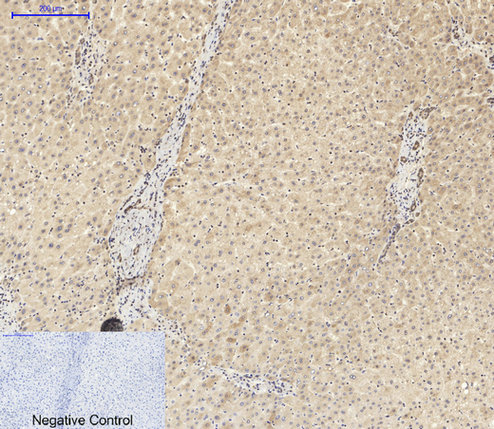
- Immunohistochemical analysis of paraffin-embedded Human-liver tissue. 1,ASC Polyclonal Antibody was diluted at 1:200(4°C,overnight). 2, Sodium citrate pH 6.0 was used for antibody retrieval(>98°C,20min). 3,Secondary antibody was diluted at 1:200(room tempeRature, 30min). Negative control was used by secondary antibody only.
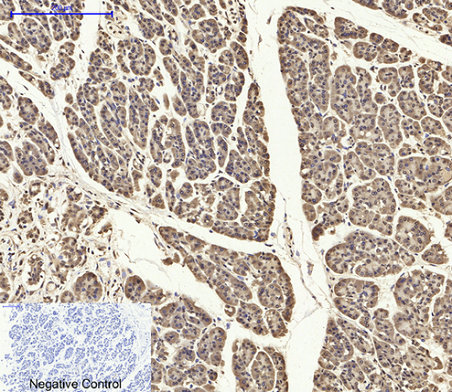
- Immunohistochemical analysis of paraffin-embedded Human-stomach-cancer tissue. 1,ASC Polyclonal Antibody was diluted at 1:200(4°C,overnight). 2, Sodium citrate pH 6.0 was used for antibody retrieval(>98°C,20min). 3,Secondary antibody was diluted at 1:200(room tempeRature, 30min). Negative control was used by secondary antibody only.
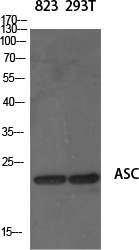
- Western Blot analysis of various cells using ASC Polyclonal Antibody diluted at 1:500
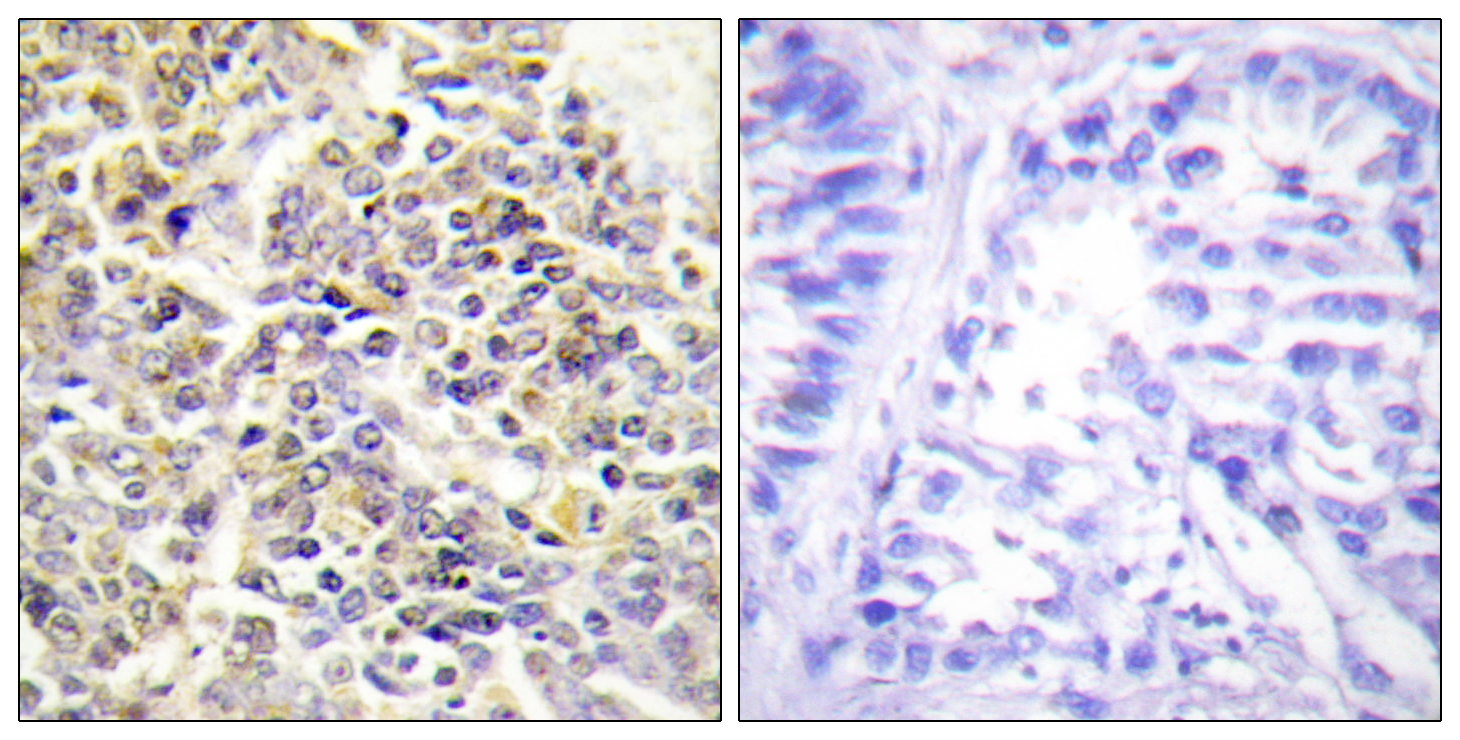
- Immunohistochemistry analysis of paraffin-embedded human lung carcinoma tissue, using ASC Antibody. The picture on the right is blocked with the synthesized peptide.



